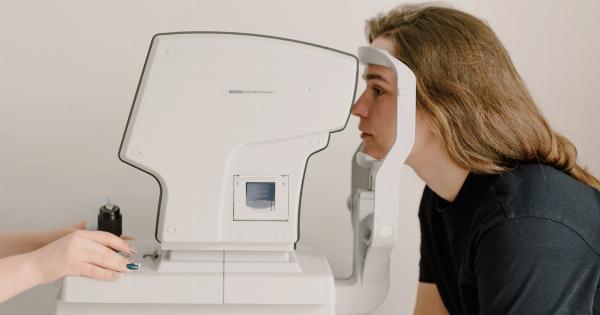Mental illnesses, such as anxiety, depression, bipolar disorder, and schizophrenia, affect millions of individuals worldwide. These conditions can significantly impact a person’s quality of life, making early diagnosis and treatment crucial.
Traditionally, mental health diagnoses are made based on self-reporting, observations, and various psychological assessments. However, recent research suggests that eye exams could potentially play a role in diagnosing certain mental illnesses, offering a non-invasive and objective method for early detection.
Eyes as Windows to the Mind
The eyes have often been referred to as the “windows to the soul,” but they may also provide valuable insights into an individual’s mental health.
Recent studies have found several intriguing connections between eye-related abnormalities and certain mental illnesses. Researchers have explored the potential for using eye-tracking technology, pupillometry, and retinal imaging to identify markers associated with various psychiatric disorders.
Eye Movements and Mental Health
Eye movements can potentially serve as indicators of mental health conditions. Research has shown distinct patterns of eye movements in individuals with schizophrenia, as compared to those without the disorder.
For example, individuals with schizophrenia tend to exhibit more rapid and erratic eye movements during specific tasks. Eye tracking can thus provide valuable insights into the cognitive processes underlying mental illnesses, helping to distinguish between different disorders and aiding in early identification.
Pupillometry and Emotional Responses
Pupillometry, the measurement of the pupillary response, has emerged as a promising tool for understanding emotional processes and identifying mental illnesses.
Changes in pupil size can indicate arousal levels and emotional responses, which are often altered in individuals with certain mental health conditions. For instance, people with anxiety disorders may exhibit abnormally dilated pupils in response to stress or fear-inducing stimuli.
By analyzing pupillary responses, clinicians and researchers can gain valuable information for diagnosing and monitoring mental illnesses.
Retinal Imaging and Biomarkers
Retinal imaging, a technique that captures detailed images of the back of the eye, has the potential to reveal biomarkers associated with mental illnesses.
The retina, which is an extension of the brain, displays changes that may be indicative of psychiatric disorders. For example, individuals with bipolar disorder or depression often exhibit thinner retinal nerve fiber layers compared to those without these conditions.
By examining the retina, clinicians can potentially identify early signs of mental illnesses and monitor the effectiveness of treatments.
The Role of Artificial Intelligence
Artificial intelligence (AI) and machine learning techniques have shown promise in analyzing eye-related data for mental health diagnoses.
By training algorithms with large datasets, researchers can develop models capable of accurately distinguishing between various psychiatric conditions. AI algorithms can analyze eye movements, pupil responses, and retinal images to identify subtle patterns undetectable by the human eye.
This technology holds great potential for improving the accuracy and efficiency of mental health diagnoses, providing early interventions for those who need them.
Challenges and Ethical Considerations
While the idea of diagnosing mental illnesses through eye exams presents exciting possibilities, several challenges and ethical considerations surround its implementation.
Firstly, the use of AI technology raises concerns regarding privacy and data security. Efforts must be made to protect patients’ personal information and ensure sensitive data does not fall into the wrong hands.
Additionally, the use of eye exams for mental health diagnoses should be approached with caution, as false positives or misinterpretations of data could lead to unnecessary treatments or stigmatization.
The Future of Mental Health Diagnostics
Despite the challenges, the exploration of eye exams as a diagnostic tool for mental illnesses opens up a realm of possibilities for the future of mental health care.
Integrating eye-related data alongside existing psychological assessments could enhance the accuracy and objectivity of diagnoses, leading to more targeted treatment plans. Eye exams could be especially beneficial in identifying individuals at risk of developing mental health conditions, allowing for early intervention and prevention.
As technology continues to advance and research progresses, the role of eye exams in mental health diagnostics may become an integral part of comprehensive psychiatric assessments.
Conclusion
The potential for using eye exams as a means of diagnosing mental illnesses offers an exciting prospect in the field of mental health care.
By leveraging eye-tracking technology, pupillometry, retinal imaging, and artificial intelligence, we may unlock valuable insights into the biological markers associated with various psychiatric disorders. However, careful consideration must be given to the ethical implications and potential limitations of this method.
As research and technology advance, eye exams may become a vital tool in early detection, personalized treatment plans, and ultimately improving the lives of those affected by mental illnesses.






























